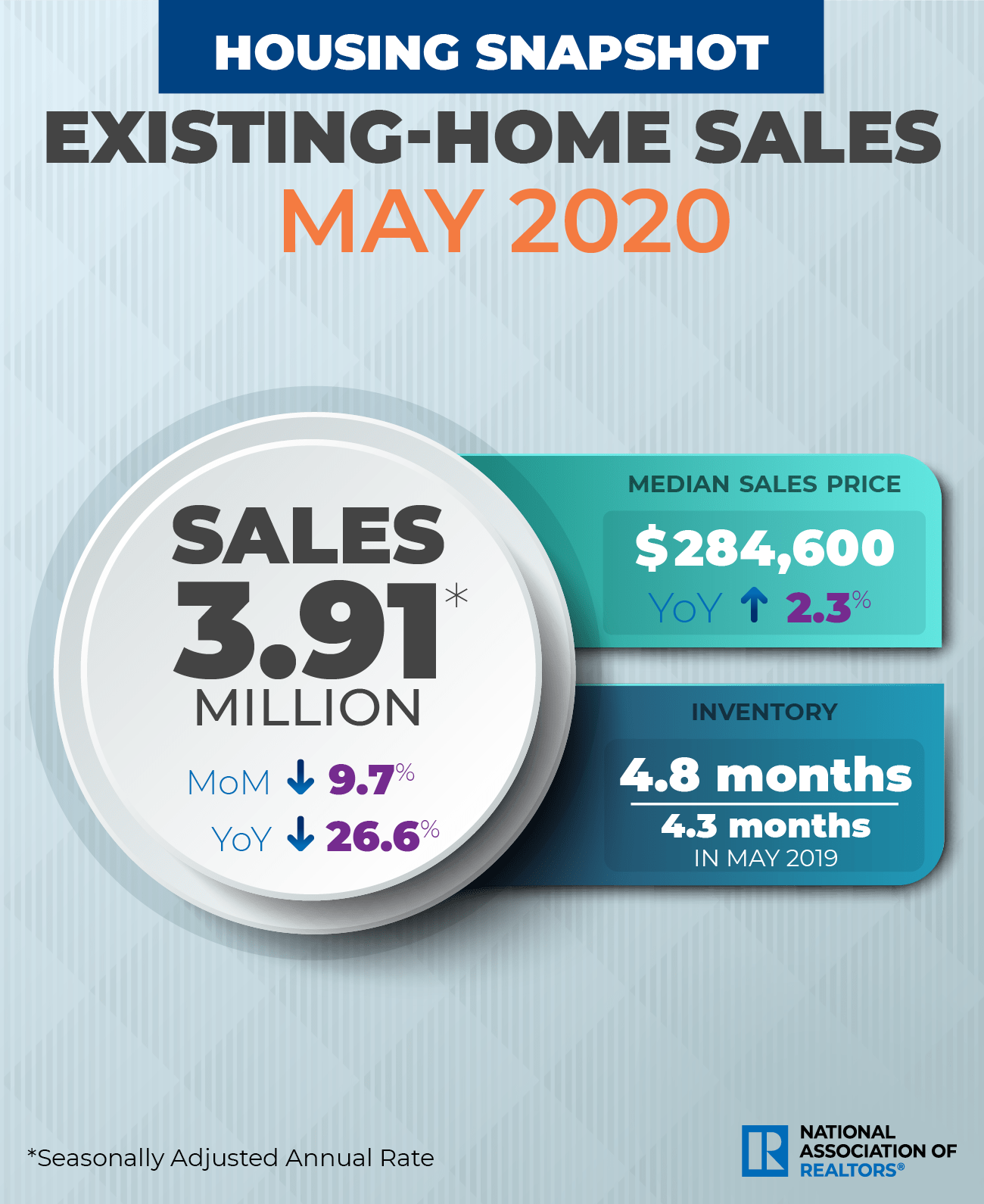Note: May 2020 data below are the most recent released by the National Association of Realtors.
Existing-home sales fell in May, marking a three-month decline in sales as a result of the coronavirus outbreak, according to the National Association of Realtors®. Each of the four major regions witnessed dips in month-over-month and year-over-year sales, with the Northeast experiencing the greatest month-over-month drop.
Total existing-home sales (transactions that include single-family homes, townhomes, condominiums and co-ops) slumped 9.7% from April to a seasonally-adjusted annual rate of 3.91 million in May. Overall, sales fell year-over-year, down 26.6% from a year ago (5.33 million in May 2019).
 “Sales completed in May reflect contract signings in March and April – during the strictest times of the pandemic lockdown and hence the cyclical low point,” said Lawrence Yun, NAR’s chief economist. “Home sales will surely rise in the upcoming months with the economy reopening, and could even surpass one-year-ago figures in the second half of the year.”
“Sales completed in May reflect contract signings in March and April – during the strictest times of the pandemic lockdown and hence the cyclical low point,” said Lawrence Yun, NAR’s chief economist. “Home sales will surely rise in the upcoming months with the economy reopening, and could even surpass one-year-ago figures in the second half of the year.”
The median existing-home price for all housing types in in May was $284,600, up 2.3% from May 2019 ($278,200), as prices increased in every region. May’s national price increase marks 99 straight months of year-over-year gains.
Total housing inventory at the end of May totaled 1.55 million units, up 6.2% from April, and down 18.8% from one year ago (1.91 million). Unsold inventory sits at a 4.8-month supply at the current sales pace, up from 4.0 months in April and up from the 4.3-month figure recorded in May 2019.
“New home construction needs to robustly ramp up in order to meet rising housing demand,” Yun said. “Otherwise, home prices will rise too fast and hinder first-time buyers, even at a time of record-low mortgage rates.”
Properties typically remained on the market for 26 days in May, seasonally down from 27 days in April, but equal to 26 days in May 2019. Fifty-eight percent of homes sold in May 2020 were on the market for less than a month.
First-time buyers were responsible for 34% of sales in May, down from 36% in April 2020 and up from 32% in May 2019. NAR’s 2019 Profile of Home Buyers and Sellers – released in late 2019 – revealed that the annual share of first-time buyers was 33%.
Individual investors or second-home buyers, who account for many cash sales, purchased 14% of homes in May, up from 10% in April 2020 and from 13% in May 2019. All-cash sales accounted for 17% of transactions in May, up from 15% in April 2020 and down from 19% in May 2019.
According to Freddie Mac, the average commitment rate for a 30-year, conventional, fixed-rate mortgage decreased to 3.23% in May, down from 3.31% in April. The average commitment rate across all of 2019 was 3.94%.
